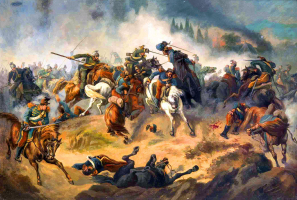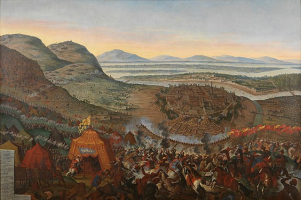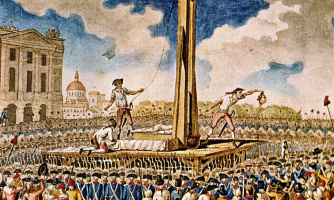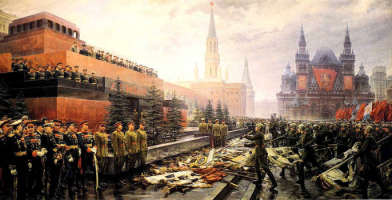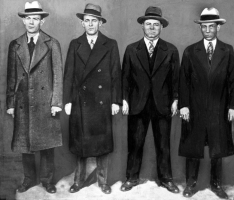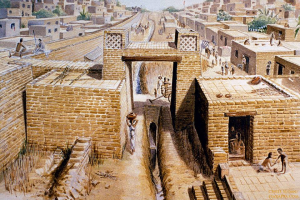Top 10 Armies That Fought the British Empire and Won
The British Empire, which at its height possessed the biggest land area of any empire in history, was also one of the most powerful militaries in the world. ... read more...Great Britain was renowned for its dramatic victories on the battlefield, frequently against much larger, better-armed adversaries, from Napoleonic France to southeast Asia to the Americas. Of course, you aren't going to prevail in every conflict. The epic tale of the British Empire includes several instances of enormous, disastrous military setbacks, much like every other strong empire in history. Here are some Armies That Fought the British Empire and Won.
-
Singapore was undoubtedly one of the best-defended British strongholds in the area when World War II broke out in the east. As the Japanese empire was rapidly militarizing, they had spent a significant amount of the interwar period on its defenses, particularly in the navy department. But none of that would really be able to deter the Japanese from attacking.
Japanese forces, numbering approximately 23,000, landed on the island and established a beachhead on February 8, 1942, signaling the start of the assault. The Japanese enjoyed nearly complete air superiority over the area despite being outnumbered by the British by a ratio of more than three to one because of their earlier territorial conquests in Malaysia.
By February 15, the entire British-led force had to submit to the Japanese elite units since the infantry divisions were no match for them. On that day, more than 90,000 allied troops were captured; many of them would subsequently perish in a Japanese POW camp due to the atrocities there.
Date: 8–15 February 1942
Location: Singapore, Straits SettlementsResult: Japanese victory
Territorial changes: Japanese occupy Singapore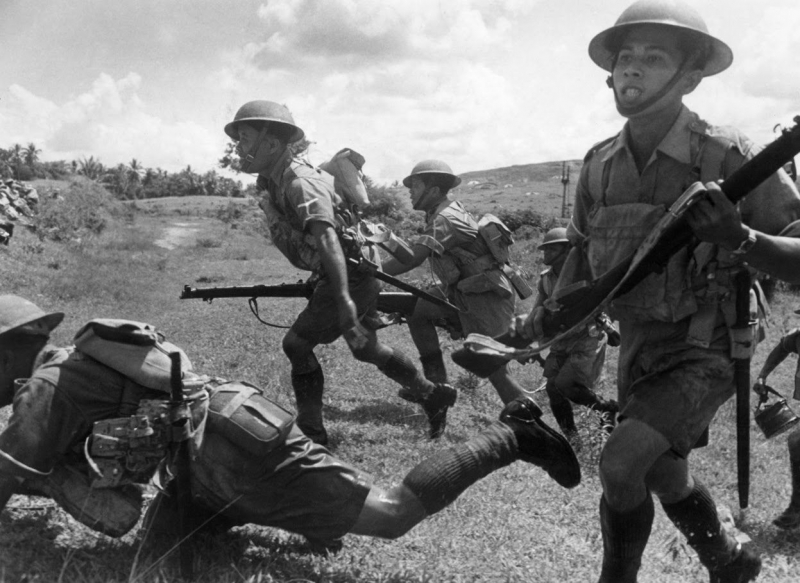
https://www.pinterest.com 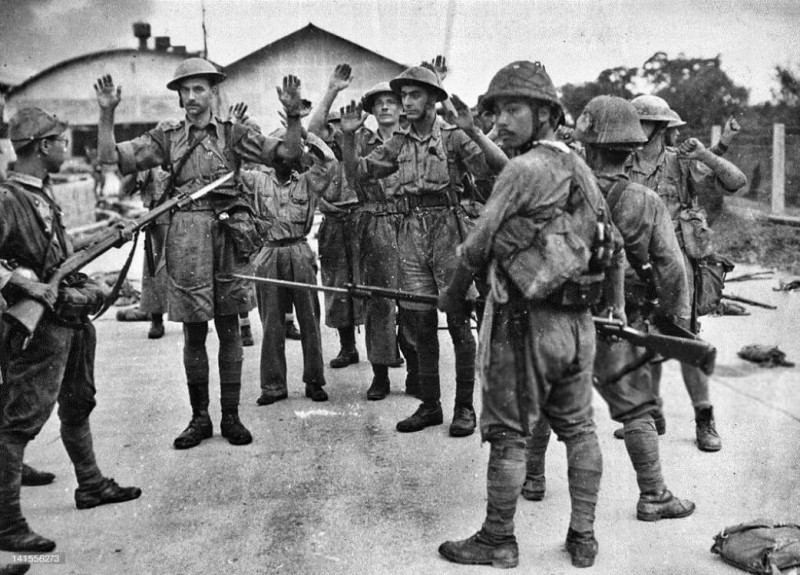
https://www.reddit.com/ -
During World War One, the Gallipoli campaign sought to attack Istanbul, the capital of the Ottoman Empire. Over 480,000 troops from the allies' military participated in the campaign, but the majority of them would never return. Along with lesser contingents from Australia, New Zealand, Russia, and other allies, the majority of it was made up of British troops.
The allies managed to take a few positions on the beach in February 1915 despite heavy losses suffered by the Royal Navy under the command of Winston Churchill, who was then the First Lord of Admiralty in the British Navy. These positions would soon be transformed into a network of trench lines resembling those in Europe.
The allies attempted to hold their positions for approximately a year, but they were helpless against the entrenched and well-equipped Ottoman force. They were also able to strengthen their fortifications considerably more quickly than the allies, who were battling their own devastating epidemics of illnesses like dysentery. In January 1916, the allied force gave up, but only after suffering significant losses. Although some estimates put the figure considerably higher, both sides sustained more than 250,000 casualties.Date: 17 February 1915 – 9 January 1916(10 months, 3 weeks and 2 days)
Location: Gallipoli Peninsula, Sanjak of Gelibolu, Adrianople Vilayet, Ottoman EmpireResult: Ottoman victory
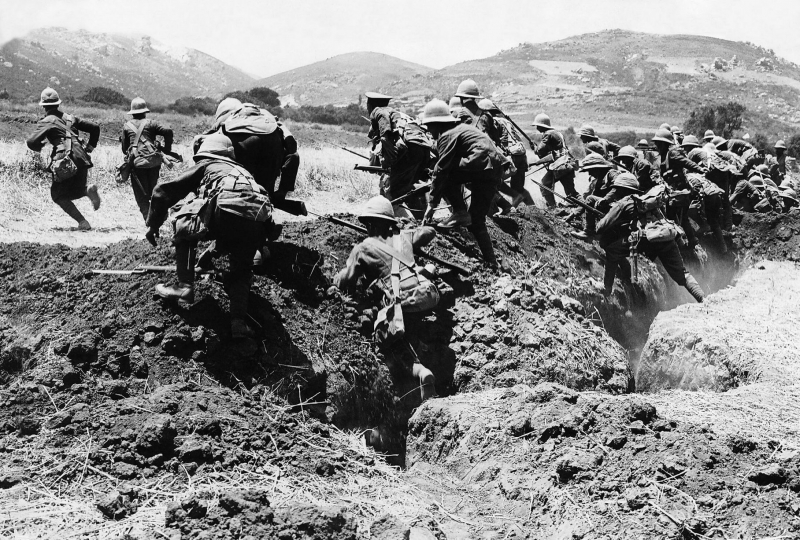
https://www.walesonline.co.uk/ 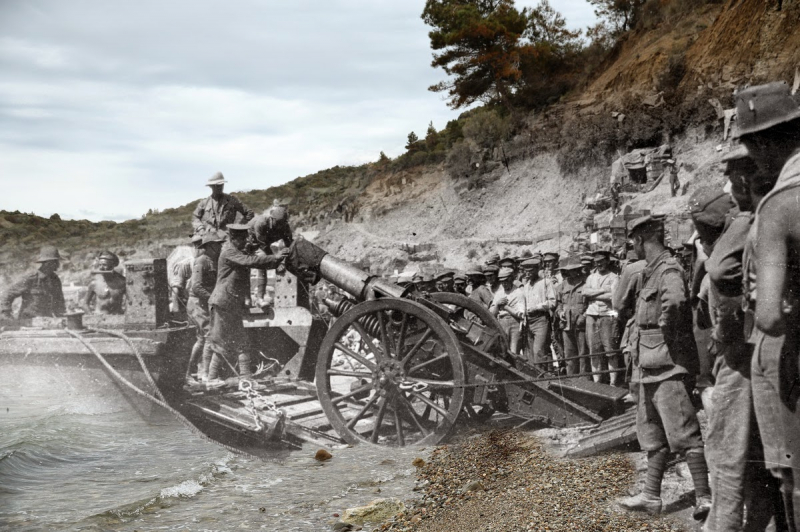
https://www.vintag.es/ -
The first Anglo-Afghan War began in March 1839 when British forces from India invaded Afghanistan. It was a component of a bigger cold war that Russia and Britain were brewing over the majority of the 19th century. They worried that if Russia invaded Afghanistan, it may be used as a springboard for an invasion of British-held India, which was at the time one of the most successful colonial ventures in history.
A total of 20,000 soldiers made up the invading force, and they were joined by a caravan of roughly 38,000 citizens who intended to settle the nation after the British had taken it over peacefully. At least during the initial period, that is what took place. By August 1839, the British war machine had successfully overthrown the incumbent emir, Dost Mohammad, and installed the puppet, pro-British monarch Shuja Shah in his place.
Afghanistan was a simple place to take over, but it would be difficult to keep onto it. Over the course of more than two years, British forces in Kabul battled a bloody insurgency on all fronts, which included the assassinations of a few prominent British officers inside Kabul. As most of the original caravan's members had already returned to their homes in India, the British force, which had a total of roughly 16,000 people, started to retire in January 1842.As the entire column was harassed and attacked by Afghan fighters until they reached Jalalabad, it would develop into a massacre. We refer to "them" as "him" because only one British officer was able to escape this tragedy because the entire column was wiped off en route.
Date: 1 October 1838 – October 1842
Location: Afghanistan
Result: Afghan victory- British withdrawal
- Dost Mohammad Khan reinstalled to the throne of Kabul
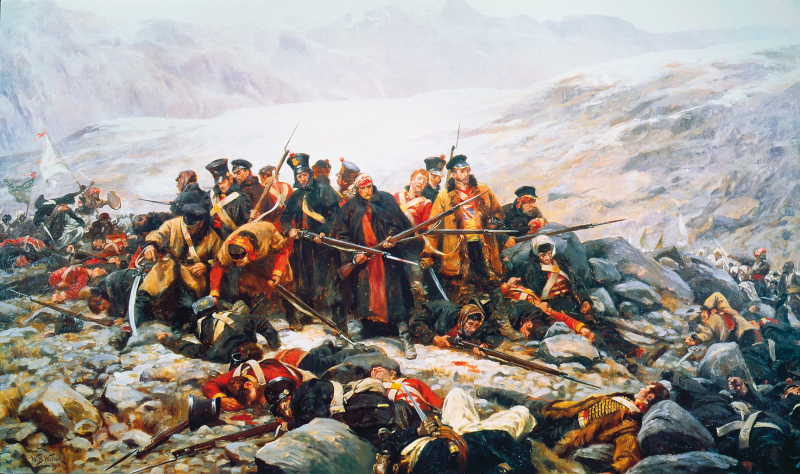
https://about-history.com 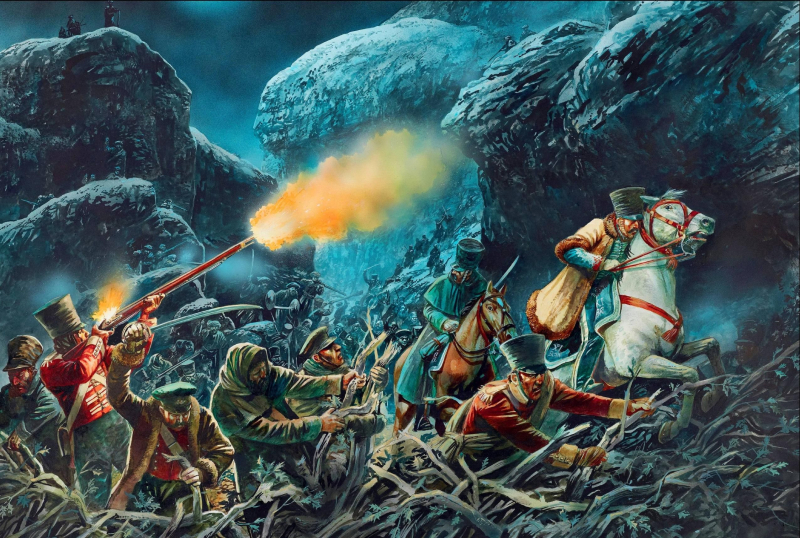
https://www.pinterest.es/ -
The broader French and Indian War, which in turn was a component of the greater Seven Years' War between Britain and France, included the Battle of Carillon. Some of the fiercest fighting of the battle took place at Fort Carillon, a fortified French outpost in New York situated between Lake George and Lake Chaplain.
The conflict started on July 6, 1758. Despite the British contingent's vast numerical advantage, the French, who were aligned with many local native groups, would likely be able to push them out in a matter of days. Even the most reasonable estimates place the number of British soldiers who assaulted the fort at least 15,000, as opposed to the about 3,600 French defenders.
Despite being well-trained and battle-ready, the British troops suffered high losses and a swift defeat because the attack lacked artillery support. By the end of the endeavor, more than 2,000 British soldiers had been killed or injured, compared to little over 300 French casualties.
Date: July 6–8, 1758
Location: Fort Carillon, present-day Ticonderoga, New YorkResult: French victory
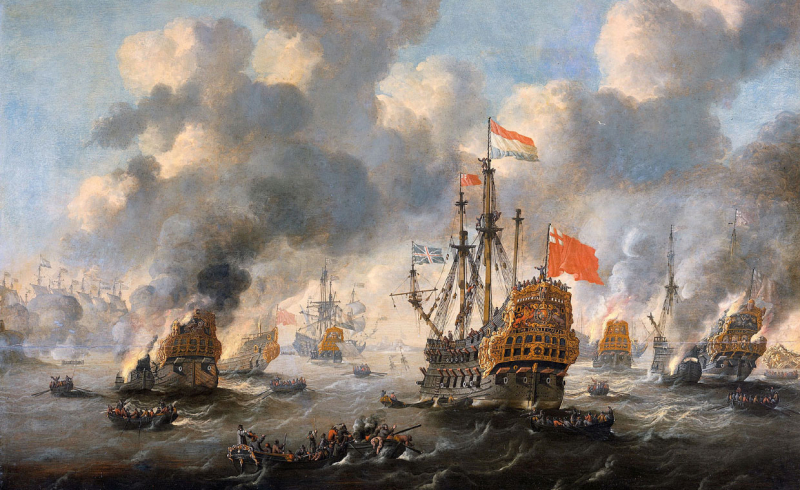
http://flintlockandtomahawk.blogspot.com/ 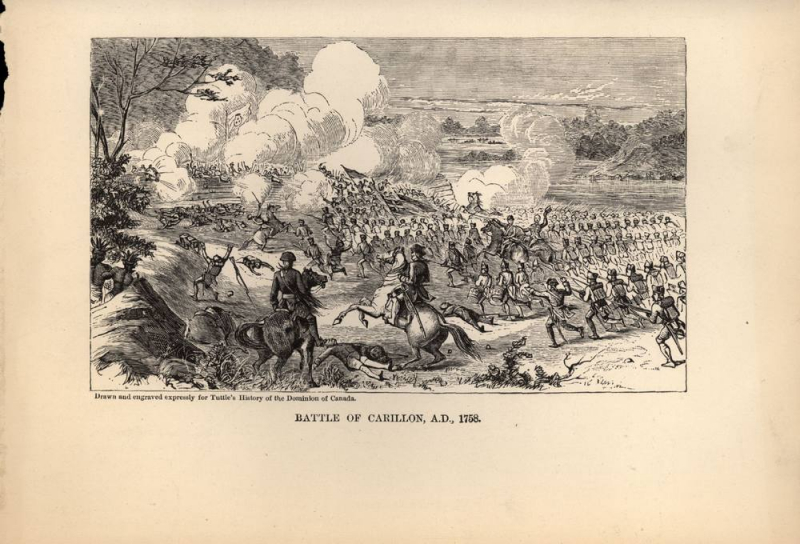
https://collections.mcq.org/ -
The 1667 Dutch invasion of the Medway dockyards occurred at the absolute worst conceivable time. The nation was involved in an increasingly fierce war with the Dutch immediately after the Great Fire of London and a terrible outbreak of the bubonic plague that killed up to 100,000 people. But the raid would turn out to be its most intense and destructive stage.
This was a period when the Royal Navy faced significant challenges from other maritime empires, like as the Dutch and Portuguese, as opposed to the later years of the empire. The raid began on June 12 when Dutch ships broke through the defensive line along British beaches and started destroying the docks as a whole.
The Dutch suffered only minor losses in exchange for the destruction of numerous fortifications, smaller boats, and cannon batteries. By the time it was all through, the Dutch had seized four ships, including HMS Royal Charles, and it had appeared as though the water was on fire. It took years for the Royal Navy to be fully operational again, making it the biggest British defeat ever to occur at home.
Date: 19–24 June 1667
Location: Chatham, Medway, EnglandResult: Dutch victory
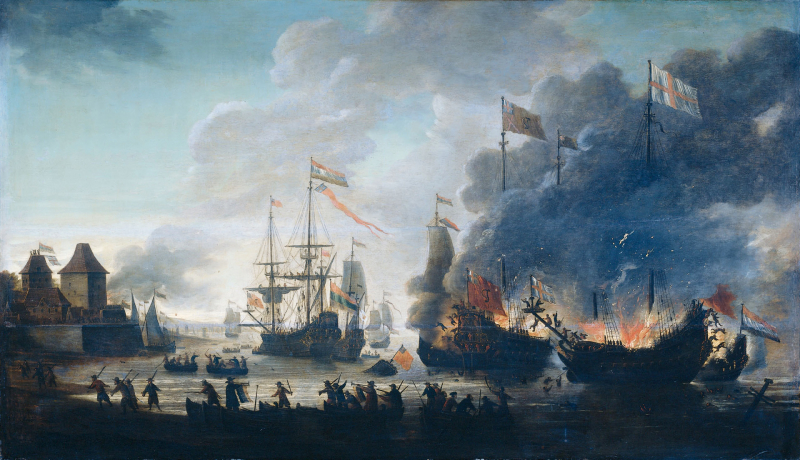
http://www.sailingwarship.com 
https://thehistorynetwork.org/ -
During the Second World War's North African campaign, an extremely fortified Allied position had grown west of Tobruk, a port city in Libya. This posture is known as the Gazala line. Its main goal was to maintain control of the city, which German and Italian forces had besieged early in the conflict. By May 1942, the British Eighth Army—a group specifically equipped for fighting and reconnaissance in the desert—had manned and defended the line nearly entirely, even though that wouldn't have been enough to stop the Axis war machine. Well, initially, at least.
Italian and German forces under the command of Erwin Rommel, popularly known as the Desert Fox for his accomplishments in this theater, launched a fierce attack on the 50-mile-long line on May 26. Even conservative estimates place the British formation, which included troops from its colonies and the Free French Republic, at close to 175,000, more than twice the size of Rommel's army.
The Eighth Army was eventually unable to sustain its supply lines, unlike Rommel, who was constantly supplied by the Italian command centers in Libya and across the Mediterranean, despite the defenders' tenacious resistance. The remaining Allied forces were encircled and forced to flee across the Egyptian border after Tobruk fell on June 21. During this combat, more than 50,000 men died and approximately 35,000 were captured, as opposed to about 3,300 soldiers lost by Germany and Italy.Date: 26 May – 21 June 1942(3 weeks and 5 days)
Location: Gazala, near Tobruk, LibyaResult: German–Italian victory
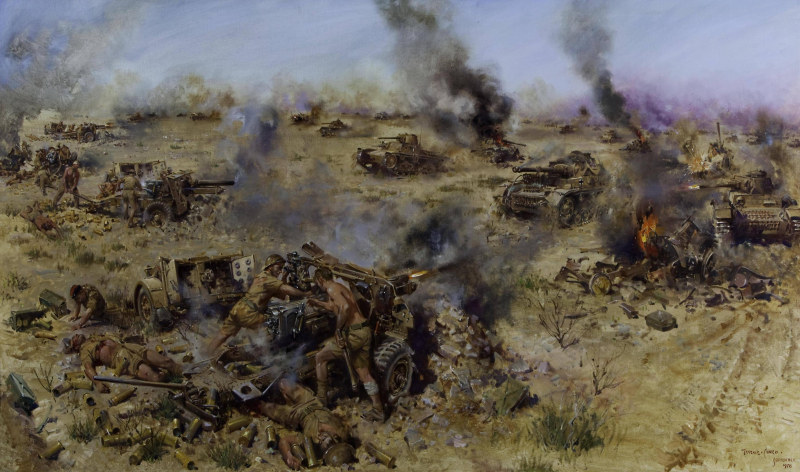
https://wall.alphacoders.com 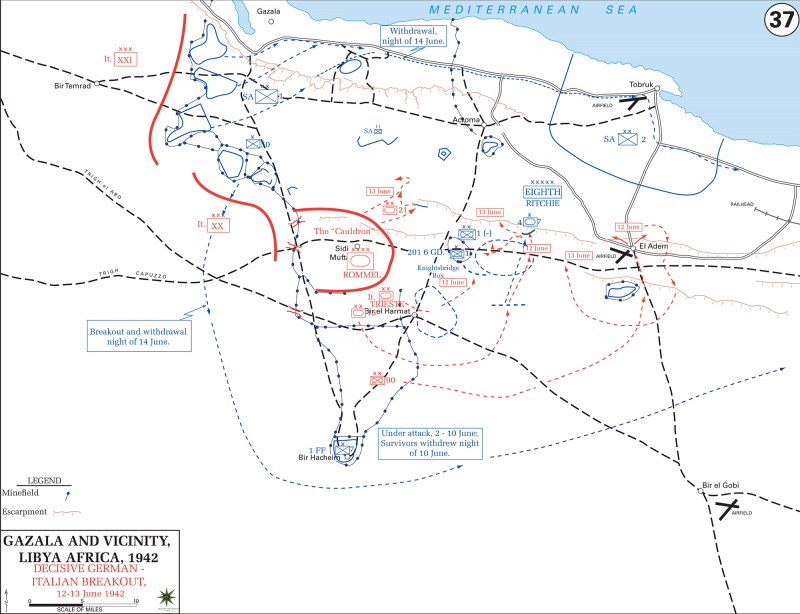
http://www.emersonkent.com/ -
The Second World War's East African campaign is mostly forgotten, and maybe for good reason. The area was largely under British control and had little strategic significance for either side, but it still experienced some of the most intense fighting outside of the main European and Pacific theaters.
The Italian and British armies engaged in combat in the Battle of Tug Argan on August 11, 1940, which was one of the early engagements in the campaign. They didn't expect Italian forces to travel that far into British-controlled territory for an outpost that might best be described as "sometimes hospitable," therefore it was a weakly held position. However, it was fantastic for the morale of the Italian forces, which could be useful in other situations.
The British soldiers were defeated in less than five days despite having strong defenses, albeit at a tremendous cost to Italy. The Italian force lost more than 2,000 troops that day despite having the numerical superiority. Around 250 British soldiers lost their lives, but they were able to leave the position before it was assaulted.
Date: 11–15 August 1940
Location: British SomalilandResult: Italian victory
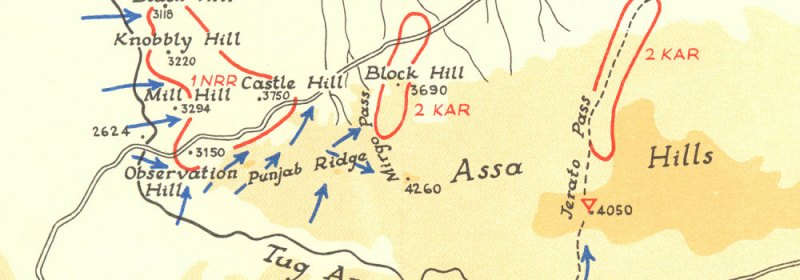
https://www.ebay.com 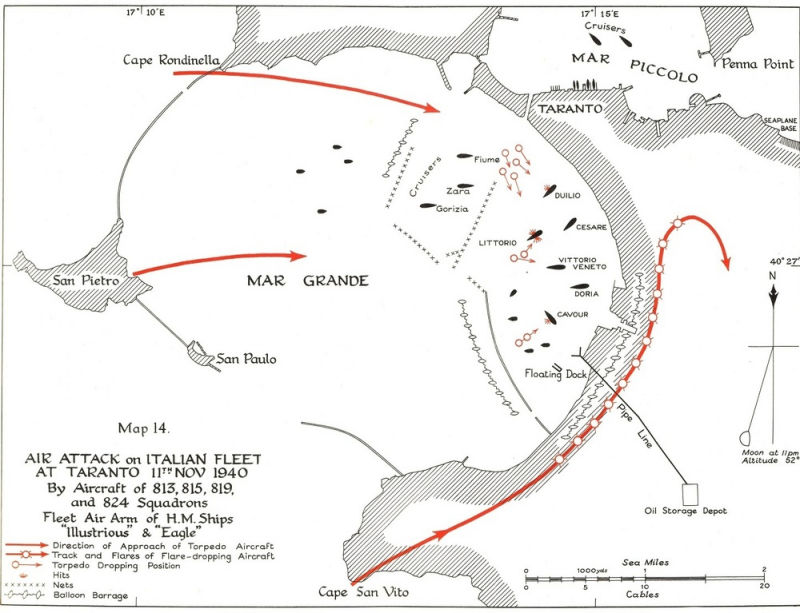
https://militaryveteransofdisqus.org -
The First World War's Mesopotamian campaign included the Battle of Kut. Kut was then a strategically significant town because of its proximity to oil - a resource that would forever change warfare - and was located around 100 miles southeast of Baghdad.
The Ottoman army besieged the town, which was defended by a British force of roughly 10,000 soldiers, on December 7, 1915. Even though it was eventually reinforced by a rescue force of around 30,000 soldiers, the British would still suffer a catastrophe during the siege.
One of the worst military conflicts in British history, the Ottoman troops slaughtered more over 30,000 British soldiers over the course of a nearly five-month siege, while being vastly outnumbered. By the end of battle, more than 13,000 men had been captured, including 476 officers and six generals. Following three assaults in December, Goltz oversaw the construction of siege fortifications aimed at Kut. He constructed defensive positions further down the Tigris River in order to block a river-borne relief in anticipation of a Basra-based attack using the river.
Date: 7 December 1915 – 29 April 1916
Location: Kut-al-Amara, Mesopotamia (modern Iraq)Result: Ottoman victory
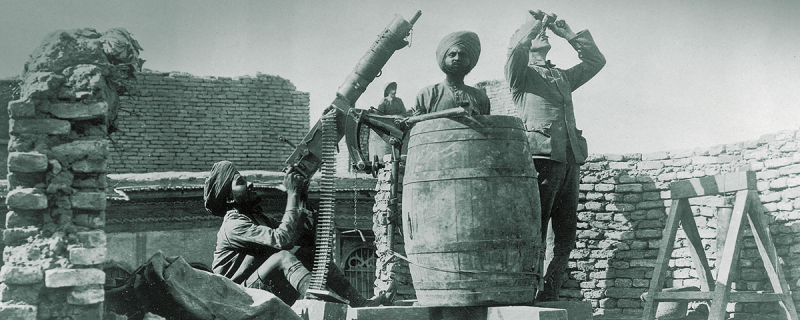
http://www.historynet.com/ 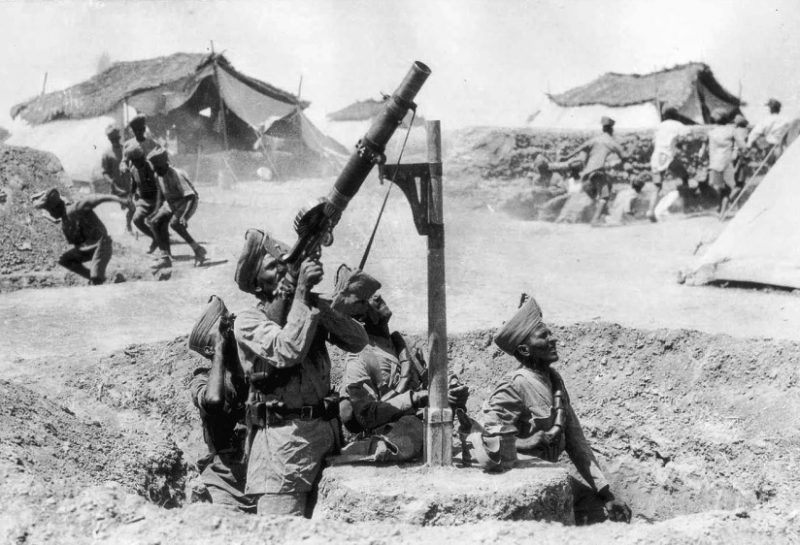
https://ww1blog.osborneink.com/ -
Even though the Boers weren't truly Dutch citizens, the First Anglo-Boer War, also known as the First Transvaal War of Independence or the Transvaal revolt, can be considered as an extension of the historical British-Dutch conflict. Boers included descendants of settlers from all around Western Europe, even if they did have a predominance of Dutch ancestry and spoke Dutch as their first language.
Long before the war, British forces entered Boer territory, but it was the annexation of Transvaal in 1877—one of the areas under Boer control—that really set the ball rolling. Beginning in December 1880, a similarly equipped and well-trained adversary faced off against the British empire in a war—or, to be more precise, a rebellion.
It didn't go well for the British, as you may infer from the list's overall theme. Due to their frequent usage of weapons for hunting, the Boers proved to be considerably more effective fighters in that environment. The British soldiers frequently encountered mobile, mounted formations of riflemen, and they had far better equipment and strategies as well.
The crucial battle of Majuba Hill, which took place in February 1881, marked the end of the conflict when the Boers successfully stormed the British stronghold on the hill, which was garrisoned by over 400 soldiers. During this conflict, almost 22,000 British soldiers perished, and the Boer side suffered over 6,000 losses.Date: 20 December 1880 – 23 March 1881 (3 months and 3 days)
Location: South African Republic (Present-day South Africa)
Result: Boer victory- Pretoria Convention
- British recognition of the South African Republic, subject to British sovereignty
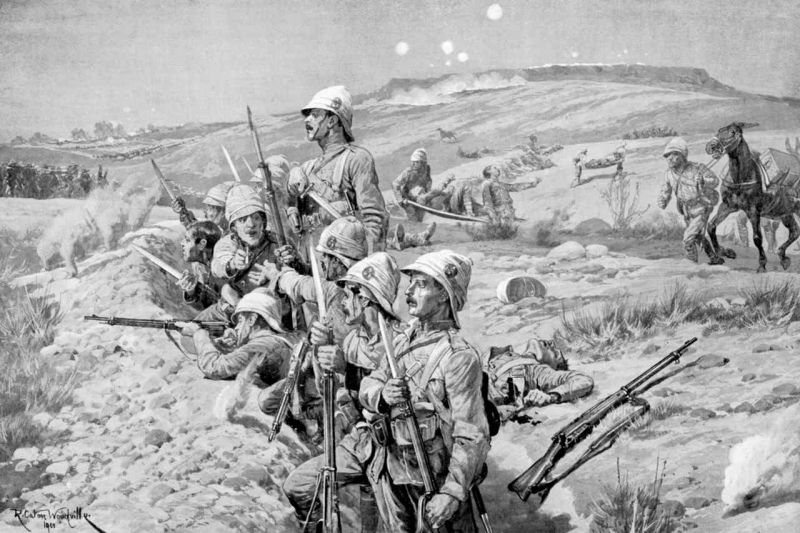
https://www.travelguideline.net/ 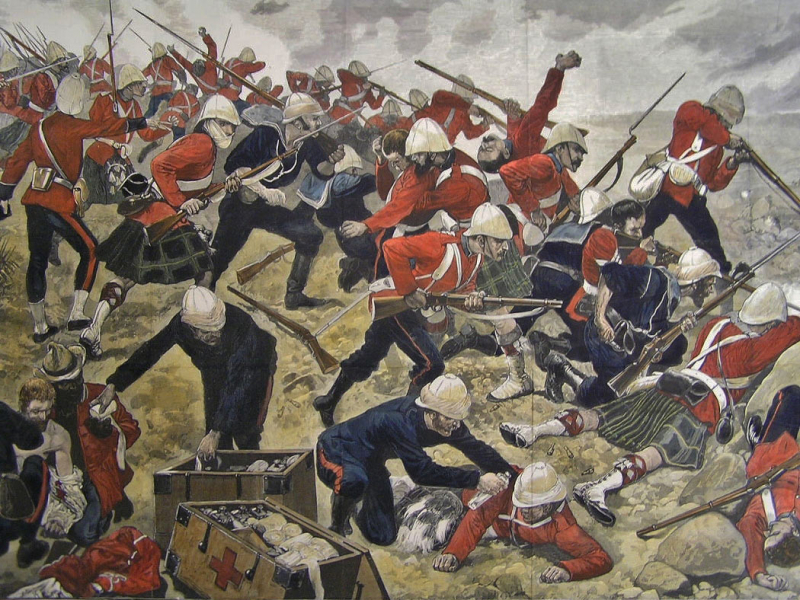
https://www.britishbattles.com - Pretoria Convention
-
The Anglo-Zulu War, a significant warfare involving the Zulu kingdom and Great Britain in the southeast of South Africa, began with the Battle of Isandlwana. Despite having a clear technological advantage over the native army, the British soldiers lost the battle on January 22, 1879, and it would go down as one of the deadliest British defeats.
The Zulu army outnumbered the British forces, who were armed with rocket launchers and cutting-edge breech loading rifles in contrast to their traditional melee weaponry like pikes and spears. This caused the British forces to be caught off guard. Lord Chelmsford, who led the attack, greatly overestimated their resolve to resist, and by day's end, a substantial portion of the British force had been wiped off.
Although the Zulus were ultimately vanquished after a six-month campaign, the battle at Isandlwana is still seen as a significant British defeat in colonial-era Africa. It was the opening combat of the Anglo-Zulu war. It was an element of broader British initiatives to unite South Africa in the area, thus undermining the independence of several, ethnically varied African states like Zululand.Date: 22 January 1879
Location: Isandlwana, KwaZulu NatalResult: Zulu victory
- First British invasion attempt defeated
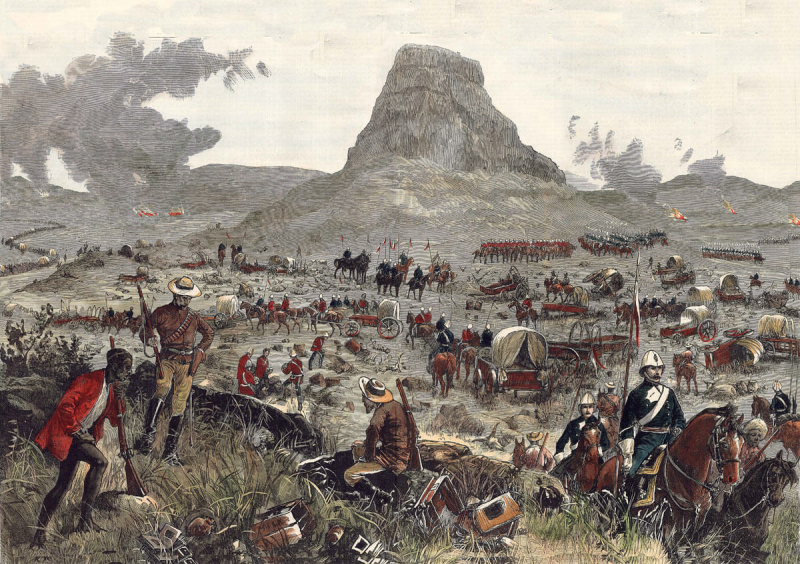
https://www.britishbattles.com/ 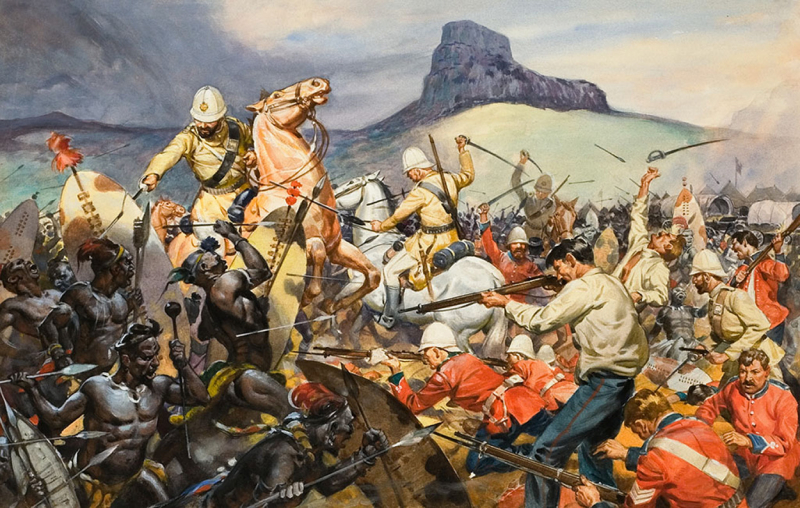
https://atlantablackstar.com












